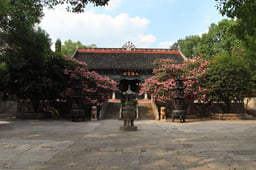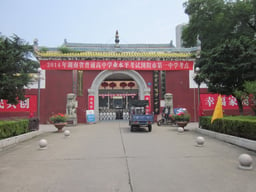Hunan
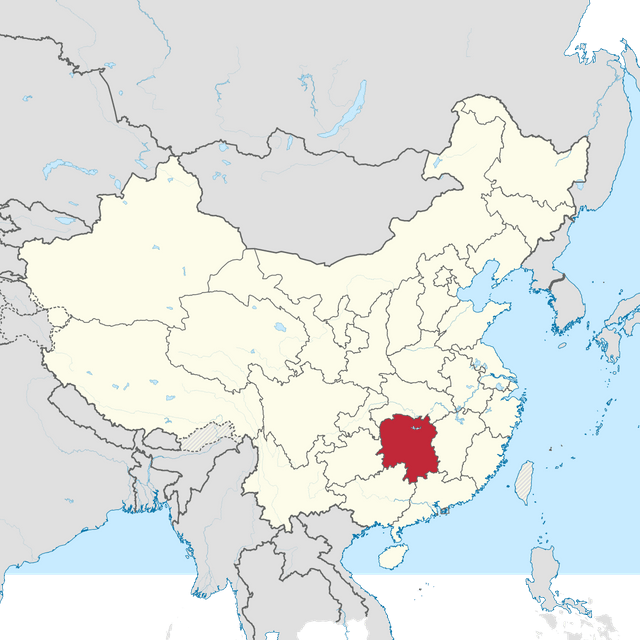
Hunan

Hunan Province 湖南省 | |||||||||||||||||||||||||||||||||||
|---|---|---|---|---|---|---|---|---|---|---|---|---|---|---|---|---|---|---|---|---|---|---|---|---|---|---|---|---|---|---|---|---|---|---|---|
Province | |||||||||||||||||||||||||||||||||||
| Name transcription(s) | |||||||||||||||||||||||||||||||||||
| • Chinese | 湖南省(Húnán Shěng) | ||||||||||||||||||||||||||||||||||
| • Abbreviation | HN /湘(pinyin: Xiāng) | ||||||||||||||||||||||||||||||||||
| Coordinates:28°06′46″N 112°59′00″E [63] | |||||||||||||||||||||||||||||||||||
| Named for | 湖hú – lake 南nán – south "south of the lake" | ||||||||||||||||||||||||||||||||||
| Capital (most populous city) | Changsha | ||||||||||||||||||||||||||||||||||
| Divisions | ****14 prefectures, 122 counties, 1,933 townships (2018), 29,224 villages (2018) | ||||||||||||||||||||||||||||||||||
| Government | |||||||||||||||||||||||||||||||||||
| • Secretary | Du Jiahao | ||||||||||||||||||||||||||||||||||
| • Governor | Xu Dazhe | ||||||||||||||||||||||||||||||||||
| Area | |||||||||||||||||||||||||||||||||||
| • Total | 210,000 km2(80,000 sq mi) | ||||||||||||||||||||||||||||||||||
| Area rank | 10th | ||||||||||||||||||||||||||||||||||
| Highest elevation | 2,115.2 m (6,939.6 ft) | ||||||||||||||||||||||||||||||||||
| Population (2014)[7] | |||||||||||||||||||||||||||||||||||
| • Total | 67,370,000 | ||||||||||||||||||||||||||||||||||
| • Rank | 7th | ||||||||||||||||||||||||||||||||||
| • Density | 320/km2(830/sq mi) | ||||||||||||||||||||||||||||||||||
| • Density rank | 13th | ||||||||||||||||||||||||||||||||||
| Demographics | |||||||||||||||||||||||||||||||||||
| • Ethnic composition | Han – 90% Tujia – 4% Miao – 3% Dong – 1% Yao – 1% Other peoples – 1% | ||||||||||||||||||||||||||||||||||
| • Languages and dialects | Chinese varieties: Xiang, Gan, Southwestern Mandarin, Xiangnan Tuhua, Waxiang, Hakka. Non-Chinese languages: Xong, Tujia, Mien, Gam | ||||||||||||||||||||||||||||||||||
| ISO 3166 code | CN-HN | ||||||||||||||||||||||||||||||||||
| GDP(2017 [8]) | CNY 3.46 trillion USD 512.32 billion (9th) | ||||||||||||||||||||||||||||||||||
| • per capita | CNY 50,563 USD 7,489 (16th) | ||||||||||||||||||||||||||||||||||
| HDI(2014) | 0.735[9] (high) (20th) | ||||||||||||||||||||||||||||||||||
| Website | www.enghunan.gov.cn [64] | ||||||||||||||||||||||||||||||||||
| Hunan | |||||||||||||||||||||||||||||||||||
"Hunan" in Chinese characters | |||||||||||||||||||||||||||||||||||
| Chinese | 湖南 | ||||||||||||||||||||||||||||||||||
| Xiang | ɣu˩˧ nia˩˧(fu-lã) | ||||||||||||||||||||||||||||||||||
| Literal meaning | "South of the (Dongting) Lake" | ||||||||||||||||||||||||||||||||||
| |||||||||||||||||||||||||||||||||||
Hunan (湖南) is a landlocked province in Central China. Located in the middle reaches of the Yangtze watershed, it borders the province-level divisions of Hubei to the north, Jiangxi to the east, Guangdong and Guangxi to the south, Guizhou to the west, and Chongqing to the northwest. Its capital and largest city is Changsha, which also abuts the Xiang River. With a population of just over 67 million as of 2014 residing in an area of approximately 210,000 km2 (81,000 sq mi), it is China's 7th most populous province by population and the 10th most extensive province by area.
The name Hunan literally means "south of the lake".[10] The lake that is referred to is Dongting Lake, a lake in the northeast of the province; Vehicle license plates from Hunan are marked Xiāng (Chinese: 湘), after the Xiang River, which runs from south to north through Hunan and forms part of the largest drainage system for the province.
The area of Hunan first came under Chinese rule around 350 BC, when the province became part of the State of Chu. Hunan was the birthplace of Chinese communist revolutionary Mao Zedong[11], who became the founding father of the People's Republic of China. Hunan today is home to some ethic minorities, including the Tujia and Miao, along with the Han Chinese, who make up a majority of the population. Varieties of Chinese spoken include Xiang, Gan, and Southwestern Mandarin.
Hunan is located on the south bank of the Yangtze River. The site of Wulingyuan was inscribed as a UNESCO World Heritage Site in 1992.[12] Changsha, the capital, is located in the eastern part of the province; it is now an important commercial, manufacturing and transportation centre.[13]
Hunan Province 湖南省 | |||||||||||||||||||||||||||||||||||
|---|---|---|---|---|---|---|---|---|---|---|---|---|---|---|---|---|---|---|---|---|---|---|---|---|---|---|---|---|---|---|---|---|---|---|---|
Province | |||||||||||||||||||||||||||||||||||
| Name transcription(s) | |||||||||||||||||||||||||||||||||||
| • Chinese | 湖南省(Húnán Shěng) | ||||||||||||||||||||||||||||||||||
| • Abbreviation | HN /湘(pinyin: Xiāng) | ||||||||||||||||||||||||||||||||||
| Coordinates:28°06′46″N 112°59′00″E [63] | |||||||||||||||||||||||||||||||||||
| Named for | 湖hú – lake 南nán – south "south of the lake" | ||||||||||||||||||||||||||||||||||
| Capital (most populous city) | Changsha | ||||||||||||||||||||||||||||||||||
| Divisions | ****14 prefectures, 122 counties, 1,933 townships (2018), 29,224 villages (2018) | ||||||||||||||||||||||||||||||||||
| Government | |||||||||||||||||||||||||||||||||||
| • Secretary | Du Jiahao | ||||||||||||||||||||||||||||||||||
| • Governor | Xu Dazhe | ||||||||||||||||||||||||||||||||||
| Area | |||||||||||||||||||||||||||||||||||
| • Total | 210,000 km2(80,000 sq mi) | ||||||||||||||||||||||||||||||||||
| Area rank | 10th | ||||||||||||||||||||||||||||||||||
| Highest elevation | 2,115.2 m (6,939.6 ft) | ||||||||||||||||||||||||||||||||||
| Population (2014)[7] | |||||||||||||||||||||||||||||||||||
| • Total | 67,370,000 | ||||||||||||||||||||||||||||||||||
| • Rank | 7th | ||||||||||||||||||||||||||||||||||
| • Density | 320/km2(830/sq mi) | ||||||||||||||||||||||||||||||||||
| • Density rank | 13th | ||||||||||||||||||||||||||||||||||
| Demographics | |||||||||||||||||||||||||||||||||||
| • Ethnic composition | Han – 90% Tujia – 4% Miao – 3% Dong – 1% Yao – 1% Other peoples – 1% | ||||||||||||||||||||||||||||||||||
| • Languages and dialects | Chinese varieties: Xiang, Gan, Southwestern Mandarin, Xiangnan Tuhua, Waxiang, Hakka. Non-Chinese languages: Xong, Tujia, Mien, Gam | ||||||||||||||||||||||||||||||||||
| ISO 3166 code | CN-HN | ||||||||||||||||||||||||||||||||||
| GDP(2017 [8]) | CNY 3.46 trillion USD 512.32 billion (9th) | ||||||||||||||||||||||||||||||||||
| • per capita | CNY 50,563 USD 7,489 (16th) | ||||||||||||||||||||||||||||||||||
| HDI(2014) | 0.735[9] (high) (20th) | ||||||||||||||||||||||||||||||||||
| Website | www.enghunan.gov.cn [64] | ||||||||||||||||||||||||||||||||||
| Hunan | |||||||||||||||||||||||||||||||||||
"Hunan" in Chinese characters | |||||||||||||||||||||||||||||||||||
| Chinese | 湖南 | ||||||||||||||||||||||||||||||||||
| Xiang | ɣu˩˧ nia˩˧(fu-lã) | ||||||||||||||||||||||||||||||||||
| Literal meaning | "South of the (Dongting) Lake" | ||||||||||||||||||||||||||||||||||
| |||||||||||||||||||||||||||||||||||
History
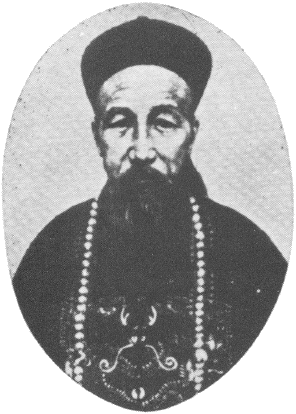
Zeng Guofan

Battle of Changsha
Hunan's primeval forests were first occupied by the ancestors of the modern Miao, Tujia, Dong and Yao peoples. The province entered written Chinese history around 350 BC, when under the kings of the Zhou dynasty, the province became part of the State of Chu. After Qin conquered the Chu heartland in 278 BC, the region came under the control of Qin, and then the Changsha Kingdom during the Han dynasty. At this time, and for hundreds of years thereafter, the province was a magnet for settlement of Han Chinese from the north, who displaced and assimilated the original indigenous inhabitants, cleared forests and began farming rice in the valleys and plains.[14] The agricultural colonization of the lowlands was carried out in part by the Han state, which managed river dikes to protect farmland from floods.[15] To this day many of the small villages in Hunan are named after the Han families who settled there. Migration from the north was especially prevalent during the Eastern Jin dynasty and the Northern and Southern dynasties periods, when nomadic invaders pushed these peoples south.
During the Five Dynasties and Ten Kingdoms period, Hunan was home to its own independent regime, Ma Chu.
Hunan and Hubei became a part of the province of Huguang until the Qing dynasty. Hunan province was created in 1664 from Huguang, renamed to its current name in 1723.
Hunan became an important communications center due to its position on the Yangzi River. It was an important centre of scholarly activity and Confucian thought, particularly in the Yuelu Academy in Changsha. It was also on the Imperial Highway constructed between northern and southern China. The land produced grain so abundantly that it fed many parts of China with its surpluses. The population continued to climb until, by the nineteenth century, Hunan became overcrowded and prone to peasant uprisings. Some of the uprisings, such as the ten-year Miao Rebellion of 1795–1806, were caused by ethnic tensions. The Taiping Rebellion began in the south in Guangxi Province in 1850. The rebellion spread into Hunan and then further eastward along the Yangzi River valley. Ultimately, it was a Hunanese army under Zeng Guofan who marched into Nanjing to put down the uprising in 1864.
Hunan was relatively quiet until 1910 when there were uprisings against the crumbling Qing dynasty, which were followed by the Communist's Autumn Harvest Uprising of 1927. It was led by Hunanese native Mao Zedong, and established a short-lived Hunan Soviet in 1927. The Communists maintained a guerrilla army in the mountains along the Hunan-Jiangxi border until 1934. Under pressure from the Nationalist Kuomintang (KMT) forces, they began the Long March to bases in Shaanxi Province. After the departure of the Communists, the KMT army fought against the Japanese in the second Sino-Japanese war. They defended Changsha until it fell in 1944. Japan launched Operation Ichigo, a plan to control the railroad from Wuchang to Guangzhou (Yuehan Railway). Hunan was relatively unscathed by the civil war that followed the defeat of the Japanese in 1945. In 1949, the Communists returned once more as the Nationalists retreated southward.
As Mao Zedong's home province, Hunan supported the Cultural Revolution of 1966–1976. However, it was slower than most provinces in adopting the reforms implemented by Deng Xiaoping in the years that followed Mao's death in 1976.
In addition to Mao Zedong, a number of other first-generation communist leaders were also from Hunan: President Liu Shaoqi; General Secretaries Ren Bishi and Hu Yaobang; Marshals Peng Dehuai, He Long, and Luo Ronghuan; Wang Zhen, one of the Eight Elders; Xiang Jingyu, the first female member of the party's central committee; Senior General Huang Kecheng; and veteran diplomat Lin Boqu. An example of a more recent leader from Hunan is former Premier Zhu Rongji.
Geography

Wulingyuan, located in south-central Hunan, is a World Heritage Site
Hunan is located on the south bank of the Yangtze River, about half way along its length, situated between 108° 47'–114° 16' east longitude and 24° 37'–30° 08' north latitude. Hunan covers an area of 211,800 square kilometres (81,800 square miles), making it the 10th largest provincial-level division. The east, south and west sides of the province are surrounded by mountains and hills, such as the Wuling Mountains to the northwest, the Xuefeng Mountains to the west, the Nanling Mountains to the south, and the Luoxiao Mountains to the east. Mountains and hills occupy more than 80% of the province, and plains less than 20%. At 2115.2 meters above sea level, the highest point in Hunan province is Lingfeng (酃峰).[16][17][18]
The Xiang, the Zi, the Yuan and the Lishui Rivers converge on the Yangtze River at Lake Dongting in the north of Hunan. The center and northern parts are somewhat low and a U-shaped basin, open in the north and with Lake Dongting as its center. Most of Hunan lies in the basins of four major tributaries of the Yangtze River.
Lake Dongting is the largest lake in the province and the second largest freshwater lake of China.
The Xiaoxiang area and Lake Dongting figure prominently in Chinese poetry and paintings, particularly during the Song dynasty when they were associated with officials who had been unjustly dismissed.[19]
Changsha (which means "long sands") was an active ceramics district during the Tang dynasty, its tea bowls, ewers and other products mass-produced and shipped to China's coastal cities for export abroad. An Arab dhow dated to the 830s and today known as the Belitung Shipwreck was discovered off the small island of Belitung, Indonesia with more than 60,000 pieces in its cargo. The salvaged cargo is today housed in nearby Singapore.
Hunan's climate is subtropical, and, under the Köppen climate classification, is classified as being humid subtropical (Köppen Cfa), with short, cool, damp winters, very hot and humid summers, and plenty of rainfall. January temperatures average 3 to 8 °C (37 to 46 °F) while July temperatures average around 27 to 30 °C (81 to 86 °F). Average annual precipitation is 1,200 to 1,700 millimetres (47 to 67 in). The Furongian Epoch in the Cambrian Period of geological time is named for Hunan; Furong (芙蓉) means "lotus" in Mandarin and refers to Hunan which is known as the "lotus state".[20]
Administrative divisions
Hunan is divided into fourteen prefecture-level divisions: thirteen prefecture-level cities and an autonomous prefecture:
| Administrative divisions of Hunan | |||||||||||
|---|---|---|---|---|---|---|---|---|---|---|---|
 Prefecture-level city district areasCounty-level cities Prefecture-level city district areasCounty-level cities | |||||||||||
| № | Division code[21] | Division | Area in km2[22] | Population 2010[23] | Seat | Divisions[24] | |||||
| Districts | Counties | Aut. counties | CL cities | ||||||||
| 430000 | Hunan Province | 210000.00 | 65,683,722 | Changsha city | 36 | 61 | 7 | 18 | |||
| 1 | 430100 | Changsha city | 11,819.46 | 7,044,118 | Yuelu District | 6 | 1 | 2 | |||
| 13 | 430200 | Zhuzhou city | 11,262.20 | 3,855,609 | Tianyuan District | 5 | 3 | 1 | |||
| 8 | 430300 | Xiangtan city | 5,006.46 | 2,748,552 | Yuetang District | 2 | 1 | 2 | |||
| 4 | 430400 | Hengyang city | 15,302.78 | 7,141,462 | Zhengxiang District | 5 | 5 | 2 | |||
| 7 | 430500 | Shaoyang city | 20,829.63 | 7,071,826 | Daxiang District | 3 | 6 | 1 | 2 | ||
| 11 | 430600 | Yueyang city | 14,897.88 | 5,477,911 | Yueyanglou District | 3 | 4 | 2 | |||
| 2 | 430700 | Changde city | 18,177.18 | 5,747,218 | Wuling District | 2 | 6 | 1 | |||
| 12 | 430800 | Zhangjiajie city | 9,516.03 | 1,476,521 | Yongding District | 2 | 2 | ||||
| 9 | 430900 | Yiyang city | 12,325.16 | 4,313,084 | Heshan District | 2 | 3 | 1 | |||
| 3 | 431000 | Chenzhou city | 19,317.33 | 4,581,778 | Beihu District | 2 | 8 | 1 | |||
| 10 | 431100 | Yongzhou city | 22,255.31 | 5,180,235 | Lengshuitan District | 2 | 8 | 1 | |||
| 5 | 431200 | Huaihua city | 27,562.72 | 4,741,948 | Hecheng District | 1 | 5 | 5 | 1 | ||
| 6 | 431300 | Loudi city | 8,107.61 | 3,785,627 | Louxing District | 1 | 2 | 2 | |||
| 14 | 433100 | Xiangxi Autonomous Prefecture | 15,462.30 | 2,547,833 | Jishou city | 7 | 1 | ||||
| Administrative divisions in Chinese and varieties of romanizations | ||||
|---|---|---|---|---|
| English | Chinese | Pinyin | Xiang Romanization | |
| Hunan Province | 湖南省 | Húnán Shěng | fu12 nan12 sǝn2 | |
| Changsha city | 长沙市 | Chángshā Shì | c̣an2 sa11 ṣî32 | |
| Zhuzhou city | 株洲市 | Zhūzhōu Shì | ćy11 c̣ôu11 ṣî32 | |
| Xiangtan city | 湘潭市 | Xiāngtán Shì | ? ? ṣî32 | |
| Hengyang city | 衡阳市 | Héngyáng Shì | xǝn12 ian12 ṣî32 | |
| Shaoyang city | 邵阳市 | Shàoyáng Shì | ? ian12 ṣî32 | |
| Yueyang city | 岳阳市 | Yuèyáng Shì | io4 ian12 ṣî32 | |
| Changde city | 常德市 | Chángdé Shì | ? tô4 ṣî32 | |
| Zhangjiajie city | 张家界市 | Zhāngjiājiè Shì | ? ćia11 kai31 ṣî32 | |
| Yiyang city | 益阳市 | Yìyáng Shì | i4 ian12 ṣî32 | |
| Chenzhou city | 郴州市 | Chēnzhōu Shì | ? c̣ôu11 ṣî32 | |
| Yongzhou city | 永州市 | Yǒngzhōu Shì | yn2 c̣ôu11 ṣî32 | |
| Huaihua city | 怀化市 | Huáihuà Shì | fai12 fa31 ṣî32 | |
| Loudi city | 娄底市 | Lóudǐ Shì | ? ti2 ṣî32 | |
| Xiangxi Autonomous Prefecture | 湘西自治州 | Xiāngxī Zìzhìzhōu | ? si11 ci31 c̣î31 c̣ôu11 | |
The fourteen prefecture-level divisions of Hunan are subdivided into 122 county-level divisions (35 districts, 17 county-level cities, 63 counties, 7 autonomous counties). Those are in turn divided into 2587 township-level divisions (1098 towns, 1158 townships, 98 ethnic townships, 225 subdistricts, and eight district public offices). At the year end of 2017, the total population is 68.6 million.[1] [65]
Urban areas
| Population by urban areas of prefecture & county cities | |||||
|---|---|---|---|---|---|
| City | Urban area[25] | District area[25] | City proper[25] | Census date | |
| 1 | Changsha[1] | 2,963,218 | 3,092,213 | 7,040,952 | 2010-11-01 |
| (1) | Changsha(new district)[1] | 230,136 | 523,660 | see Changsha | 2010-11-01 |
| 2 | Hengyang | 1,115,645 | 1,133,967 | 7,148,344 | 2010-11-01 |
| 3 | Zhuzhou[2] | 999,404 | 1,055,150 | 3,857,100 | 2010-11-01 |
| (3) | Zhuzhou(new district)[2] | 94,326 | 383,598 | see Zhuzhou | 2010-11-01 |
| 4 | Yueyang | 924,099 | 1,231,509 | 5,476,084 | 2010-11-01 |
| 5 | Xiangtan | 903,287 | 960,303 | 2,752,171 | 2010-11-01 |
| 6 | Changde | 846,308 | 1,457,419 | 5,714,623 | 2010-11-01 |
| 7 | Yiyang | 697,607 | 1,245,517 | 4,307,933 | 2010-11-01 |
| 8 | Liuyang | 588,081 | 1,279,469 | see Changsha | 2010-11-01 |
| 9 | Chenzhou | 582,971 | 822,534 | 4,583,531 | 2010-11-01 |
| 10 | Shaoyang | 574,527 | 753,194 | 7,071,735 | 2010-11-01 |
| 11 | Yongzhou | 540,930 | 1,020,715 | 5,194,275 | 2010-11-01 |
| (12) | Ningxiang[3] | 498,055 | 116,6138 | see Changsha | 2010-11-01 |
| 13 | Leiyang | 476,173 | 1,151,554 | see Hengyang | 2010-11-01 |
| 14 | Huaihua | 472,687 | 552,622 | 4,741,673 | 2010-11-01 |
| 15 | Liling | 449,067 | 947,387 | see Zhuzhou | 2010-11-01 |
| 16 | Loudi | 425,037 | 496,744 | 3,784,634 | 2010-11-01 |
| 17 | Changning | 332,927 | 810,447 | see Hengyang | 2010-11-01 |
| 18 | Miluo | 321,074 | 692,080 | see Yueyang | 2010-11-01 |
| 19 | Yuanjiang | 281,097 | 666,270 | see Yiyang | 2010-11-01 |
| 20 | Zhangjiajie | 250,489 | 494,528 | 1,478,149 | 2010-11-01 |
| 21 | Lianyuan | 245,360 | 995,515 | see Loudi | 2010-11-01 |
| 22 | Lengshuijiang | 238,275 | 327,146 | see Loudi | 2010-11-01 |
| 23 | Linxiang | 225,054 | 498,319 | see Yueyang | 2010-11-01 |
| 24 | Zixing | 215,707 | 337,294 | see Chenzhou | 2010-11-01 |
| 25 | Jishou | 212,328 | 302,065 | part of Xiangxi Prefecture | 2010-11-01 |
| 26 | Xiangxiang | 210,799 | 788,216 | see Xiangtan | 2010-11-01 |
| 27 | Hongjiang | 197,753 | 477,996 | see Huaihua | 2010-11-01 |
| 28 | Wugang | 187,436 | 734,870 | see Shaoyang | 2010-11-01 |
| 29 | Jinshi | 156,230 | 250,898 | see Changde | 2010-11-01 |
| 30 | Shaoshan | 27,613 | 86,036 | see Xiangtan | 2010-11-01 |
Politics
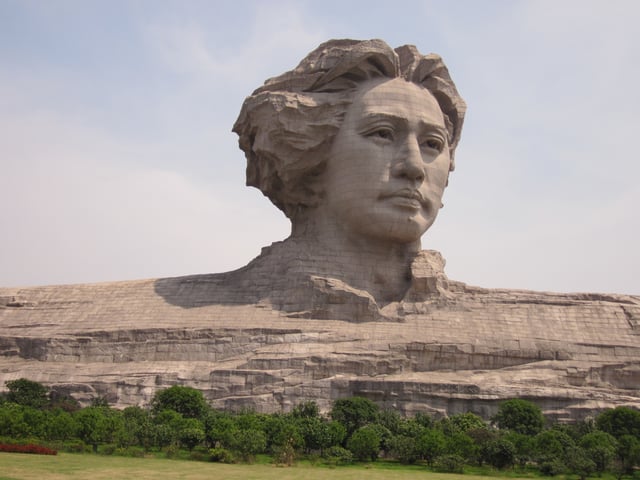
Young Mao Zedong statue in Hunan
The politics of Hunan is structured in a dual party-government system like all other governing institutions in mainland China.
The Governor of Hunan is the highest-ranking official in the People's Government of Hunan. However, in the province's dual party-government governing system, the Governor has less power than the Hunan Communist Party of China Provincial Committee Secretary, colloquially termed the "Hunan CPC Party Chief".
Economy
As of the mid 19th century, Hunan exported rhubarb, musk, honey, tobacco, hemp, and birds.[26] The Lake Dongting area is an important center of ramie production, and Hunan is also an important center of tea cultivation. Aside from agricultural products, in recent years Hunan has grown to become an important center for steel, machinery and electronics production, especially as China's manufacturing sector moves away from coastal provinces such as Guangdong and Zhejiang.[27]
The Lengshuijiang area is noted for its stibnite mines, and is one of the major centers of antimony extraction in China.
Hunan is also well known for a few international makers of construction equipments such as concrete pumps, cranes, etc. These companies include Sany Group, Zoomlion and Sunward. Sany is one of the major players in the world. Liuyang is the major maker of fireworks in the world. [28]
As of 2016, its nominal GDP was USD 475 billion (CNY 3.16 trillion), the per capita GDP was USD 6,983 (CNY 46,382).[29]
| Historical GDP of Hunan Province for 1952 –present (SNA2008)[30] (purchasing power parity of Chinese Yuan, as Int'l. dollar based on IMF WEO October 2017[31]) | |||||||||
| year | GDP | **GDP per capita (GDPpc) ** based on mid-year population | Reference index | ||||||
| GDP in millions | real growth (%) | GDPpc | exchange rate *1 foreign currency to CNY* | ||||||
| CNY | USD | PPP (Int'l$.) | CNY | USD | PPP (Int'l$.) | USD 1 | Int'l$. 1 (PPP) | ||
| 2016 | 3,155,137 | 475,007 | 901,236 | 8.0 | 46,382 | 6,983 | 13,249 | 6.6423 | 3.5009 |
| 2015 | 2,917,217 | 468,373 | 821,867 | 8.5 | 43,157 | 6,929 | 12,159 | 6.2284 | 3.5495 |
| 2014 | 2,728,177 | 444,126 | 768,414 | 9.5 | 40,635 | 6,615 | 11,445 | 6.1428 | 3.5504 |
| 2013 | 2,483,465 | 400,999 | 694,307 | 10.1 | 37,263 | 6,017 | 10,418 | 6.1932 | 3.5769 |
| 2012 | 2,233,833 | 353,875 | 629,107 | 11.4 | 33,758 | 5,348 | 9,507 | 6.3125 | 3.5508 |
| 2011 | 1,981,655 | 306,815 | 565,299 | 12.8 | 30,103 | 4,661 | 8,587 | 6.4588 | 3.5055 |
| 2010 | 1,615,325 | 238,618 | 487,925 | 14.6 | 24,897 | 3,678 | 7,520 | 6.7695 | 3.3106 |
| 2009 | 1,315,627 | 192,597 | 416,667 | 13.9 | 20,579 | 3,013 | 6,517 | 6.8310 | 3.1575 |
| 2008 | 1,162,761 | 167,422 | 366,016 | 14.1 | 18,261 | 2,629 | 5,748 | 6.9451 | 3.1768 |
| 2007 | 948,599 | 124,750 | 314,637 | 15.1 | 14,942 | 1,965 | 4,956 | 7.6040 | 3.0149 |
| 2006 | 772,232 | 96,870 | 268,350 | 12.8 | 12,192 | 1,529 | 4,237 | 7.9718 | 2.8777 |
| 2005 | 662,345 | 80,856 | 231,670 | 12.2 | 10,606 | 1,295 | 3,710 | 8.1917 | 2.8590 |
| 2000 | 355,149 | 42,901 | 130,603 | 9.0 | 5,425 | 655 | 1,995 | 8.2784 | 2.7193 |
| 1995 | 213,213 | 25,531 | 78,117 | 10.3 | 3,359 | 402 | 1,231 | 8.3510 | 2.7294 |
| 1990 | 74,444 | 15,564 | 43,724 | 4.0 | 1,228 | 257 | 721 | 4.7832 | 1.7026 |
| 1985 | 34,995 | 11,917 | 24,966 | 12.1 | 626 | 213 | 447 | 2.9366 | 1.4017 |
| 1980 | 19,172 | 12,795 | 12,820 | 5.2 | 365 | 244 | 244 | 1.4984 | 1.4955 |
| 1975 | 11,840 | 6,366 | 10.3 | 239 | 129 | 1.8598 | |||
| 1970 | 9,305 | 3,780 | 17.6 | 211 | 86 | 2.4618 | |||
| 1965 | 6,532 | 2,653 | 13.2 | 170 | 69 | 2.4618 | |||
| 1960 | 6,407 | 2,603 | -1.0 | 176 | 71 | 2.4618 | |||
| 1955 | 3,583 | 1,376 | 18.5 | 104 | 40 | 2.6040 | |||
| 1952 | 2,781 | 1,251 | 86 | 39 | 2.2227 | ||||
Economic and technological development zones
Changsha National Economic and Technical Development Zone
The Changsha National Economic and Technology Development Zone was founded in 1992. It is located east of Changsha. The total planned area is 38.6 km2 (14.9 sq mi) and the current area is 14 km2 (5.4 sq mi). Near the zone is National Highways G319 and G107 as well as Jingzhu Highway. Besides that, it is very close to the downtown and the railway station. The distance between the zone and the airport is 8 km (5.0 mi). The major industries in the zone include high-tech industry, biology project technology and new material industry.[32]
Changsha National New & Hi-Tech Industrial Development Zone
Chenzhou Export Processing Zone
Approved by the State Council, Chenzhou Export processing Zone (CEPZ) was established in 2005 and is the only export processing zone in Hunan province. The scheduled production area of CEPZ covers 3km2. The industrial positioning of CEPZ is to concentrate on developing export-oriented hi-tech industries, including electronic information, precision machinery, and new-type materials. The zone has good infrastructure, and the enterprises inside could enjoy the preferential policies of tax-exemption, tax-guarantee and tax-refunding. By the end of the “Eleventh Five-Year Plan”, the CEPZ achieved a total export and import volume of over US$1 billion and provided more than 50,000 jobs. It aimed to be one of the first-class export processing zones in China.[33]
Zhuzhou National New & Hi-Tech Industrial Development Zone
Zhuzhou Hi-Tech Industrial Development Zone was founded in 1992. Its total planned area is 35 km2 (14 sq mi). It is very close to National Highway G320. The major industries in the zone include biotechnology, food processing and heavy industry. In 2007, the park signed a cooperation contract with Beijing Automobile Industry, one of the largest auto makers in China, which will set up a manufacturing base in Zhuzhou HTP.[34]
Demographics
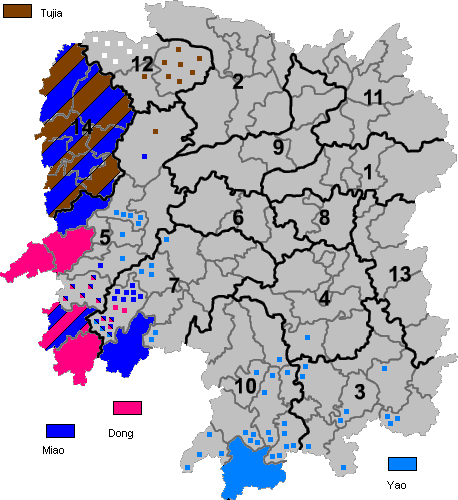
Ethnic minorities areas in Hunan
As of the 2000 census, the population of Hunan is 64,400,700 consisting of forty-one ethnic groups. Its population grew 6.17% (3,742,700) from its 1990 levels. According to the census, 89.79% (57,540,000) identified themselves as Han people, 10.21% (6,575,300) as minority groups. The minority groups are Tujia, Miao, Dong, Yao, Bai, Hui, Zhuang, Uyghurs and so on.
In Hunan, ethnic minority languages are spoken in the following prefectures.
Xiangxi Tujia and Miao Autonomous Prefecture: Qo Xiong language, Tujia language
Huaihua: Qo Xiong language, Dong language, Hm Nai language, Hmu language
Shaoyang: Maojia language, Hm Nai language, Pa-Hng language
Yongzhou: Mien language, Biao Min language
Chenzhou: Dzao Min language
Hunanese Uyghurs
Around 5,000 Uyghurs live around Taoyuan County and other parts of Changde.[46][47][48][49] Hui and Uyghurs have intermarried in this area.[50][51][52] In addition to eating pork, the Uygurs of Changde practice other Han Chinese customs, like ancestor worship at graves. Some Uyghurs from Xinjiang visit the Hunan Uyghurs out of curiosity or interest.[53] Also, the Uyghurs of Hunan do not speak the Uyghur language, instead, they speak Chinese as their native language.[54]
Religion
The predominant religions in Hunan are Chinese Buddhism, Taoist traditions and Chinese folk religions. According to surveys conducted in 2007 and 2009, 20.19% of the population believes and is involved in ancestor veneration, while 0.77% of the population identifies as Christian.[45] The reports didn't give figures for other types of religion; 79.04% of the population may be either irreligious or involved in worship of nature deities, Buddhism, Confucianism, Taoism, folk religious sects.
Culture
Hunan's culture industry generated 87 billion yuan (US$11.76 billion) in economic value in 2007,[55] and is major contributor to the province's economic growth. The industry accounts for 7.5 percent of the region's GDP.
Language
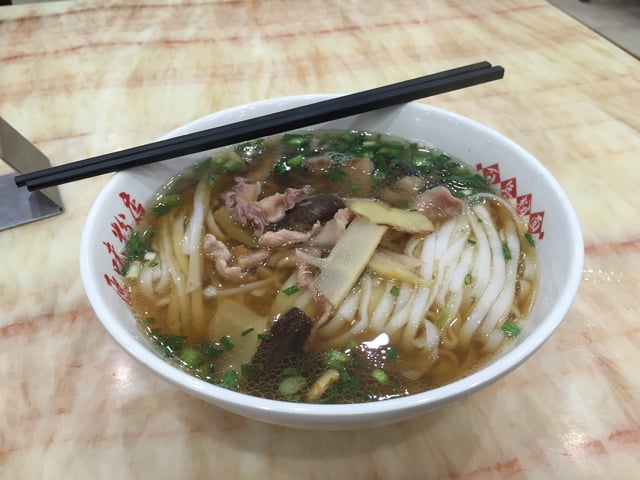
A bowl of rice noodles made in Changsha.
Xiang Chinese (湘語) is the eponymous variety of Chinese spoken in Hunan. In addition to Xiang Chinese, there are also other dialects and languages present, such as Southwestern Mandarin, Hakka, Waxiang, and Xiangnan Tuhua. Nü shu, a writing system for Xiangnan Tuhua, is used exclusively among women in Jiangyong County and neighboring areas in southern Hunan.
Cuisine
Music
Huaguxi is a local form of Chinese opera that is very popular in Hunan province.
Tourism
Located in the south central part of the Chinese mainland, Hunan has long been known for its natural environment. It is surrounded by mountains on the east, west, and south, and by the Yangtze River on the north. For thousands of years, the region has been a major center of agriculture, growing rice, tea, and oranges. China's first all glass suspension bridge was also opened in Hunan, in Shiniuzhai National Geological Park.[58]
Wulingyuan is a World Heritage Site and a 5A Scenic Area. Located in south-central Hunan, Wulingyuan is noted for its thousands of quartzite sandstone pillars, caves, and waterfalls. The area also contains Zhangjiajie National Forest Park.
Shaoshan County, known for being the birthplace of Mao Zedong
Yueyang Tower, on the shores of Lake Dongting, was built in the Han and Jin dynasties, and has existed in its current state since the Qing Dynasty. Alongside the Pavilion of Prince Teng and Yellow Crane Tower, it is one of the Three Great Towers of Jiangnan.
Mount Heng, in Hengyang, is one of the Five Great Mountains of China, and is home to the largest temple in southern China.
Fenghuang County, in Xiangxi Prefecture, has been placed on the UNESCO World Heritage Tentative List for its ancient town. Fenghuang is known for its incorporation of mountain features and water flow into city design, and the ancient syncretism between the local Han and Miao cultures.[59]
[[INLINE_IMAGE|//upload.wikimedia.org/wikipedia/commons/thumb/7/77/1_tianzishan_wulingyuan_zhangjiajie_2012.jpg/120px-1_tianzishan_wulingyuan_zhangjiajie_2012.jpg|//upload.wikimedia.org/wikipedia/commons/thumb/7/77/1_tianzishan_wulingyuan_zhangjiajie_2012.jpg/180px-1_tianzishan_wulingyuan_zhangjiajie_2012.jpg 1.5x, //upload.wikimedia.org/wikipedia/commons/thumb/7/77/1_tianzishan_wulingyuan_zhangjiajie_2012.jpg/240px-1_tianzishan_wulingyuan_zhangjiajie_2012.jpg 2x||h60|w120]]
View of Wulingyuan
[[INLINE_IMAGE|//upload.wikimedia.org/wikipedia/commons/thumb/d/df/1_fenghuang_ancient_town_hunan_china.jpg/120px-1_fenghuang_ancient_town_hunan_china.jpg|//upload.wikimedia.org/wikipedia/commons/thumb/d/df/1_fenghuang_ancient_town_hunan_china.jpg/180px-1_fenghuang_ancient_town_hunan_china.jpg 1.5x, //upload.wikimedia.org/wikipedia/commons/thumb/d/df/1_fenghuang_ancient_town_hunan_china.jpg/240px-1_fenghuang_ancient_town_hunan_china.jpg 2x||h82|w120]]
Fenghuang waterside
[[INLINE_IMAGE|//upload.wikimedia.org/wikipedia/commons/thumb/8/87/Zhangjiajie-Hunan.jpg/120px-Zhangjiajie-Hunan.jpg|//upload.wikimedia.org/wikipedia/commons/thumb/8/87/Zhangjiajie-Hunan.jpg/180px-Zhangjiajie-Hunan.jpg 1.5x, //upload.wikimedia.org/wikipedia/commons/thumb/8/87/Zhangjiajie-Hunan.jpg/240px-Zhangjiajie-Hunan.jpg 2x||h90|w120]]
Peaks of Zhangjiajie
[[INLINE_IMAGE|//upload.wikimedia.org/wikipedia/commons/thumb/b/b0/Changsha_Tianxin_Pavilion.jpg/120px-Changsha_Tianxin_Pavilion.jpg|//upload.wikimedia.org/wikipedia/commons/thumb/b/b0/Changsha_Tianxin_Pavilion.jpg/180px-Changsha_Tianxin_Pavilion.jpg 1.5x, //upload.wikimedia.org/wikipedia/commons/thumb/b/b0/Changsha_Tianxin_Pavilion.jpg/240px-Changsha_Tianxin_Pavilion.jpg 2x||h47|w120]]
Tianxin Pavilion
[[INLINE_IMAGE|//upload.wikimedia.org/wikipedia/commons/thumb/6/62/1_zhangjiajie_huangshizhai_wulingyuan_panorama_2012.jpg/120px-1_zhangjiajie_huangshizhai_wulingyuan_panorama_2012.jpg|//upload.wikimedia.org/wikipedia/commons/thumb/6/62/1_zhangjiajie_huangshizhai_wulingyuan_panorama_2012.jpg/180px-1_zhangjiajie_huangshizhai_wulingyuan_panorama_2012.jpg 1.5x, //upload.wikimedia.org/wikipedia/commons/thumb/6/62/1_zhangjiajie_huangshizhai_wulingyuan_panorama_2012.jpg/240px-1_zhangjiajie_huangshizhai_wulingyuan_panorama_2012.jpg 2x||h61|w120]]
Pillars of Wulingyuan
[[INLINE_IMAGE|//upload.wikimedia.org/wikipedia/commons/thumb/c/c5/1_furong_panorama_2012.jpg/120px-1_furong_panorama_2012.jpg|//upload.wikimedia.org/wikipedia/commons/thumb/c/c5/1_furong_panorama_2012.jpg/180px-1_furong_panorama_2012.jpg 1.5x, //upload.wikimedia.org/wikipedia/commons/thumb/c/c5/1_furong_panorama_2012.jpg/240px-1_furong_panorama_2012.jpg 2x||h70|w120]]
Furong Ancient City
Education
See List of universities and colleges in Hunan
Sports
Professional sports teams in Hunan include:
Chinese Football Association League One Hunan Billows F.C.
See also
Major national historical and cultural sites in Hunan
Xiaoxiang, the "lakes and rivers" region of south-central China
State of Chu, ancient Chinese state partly in modern-day Hunan
